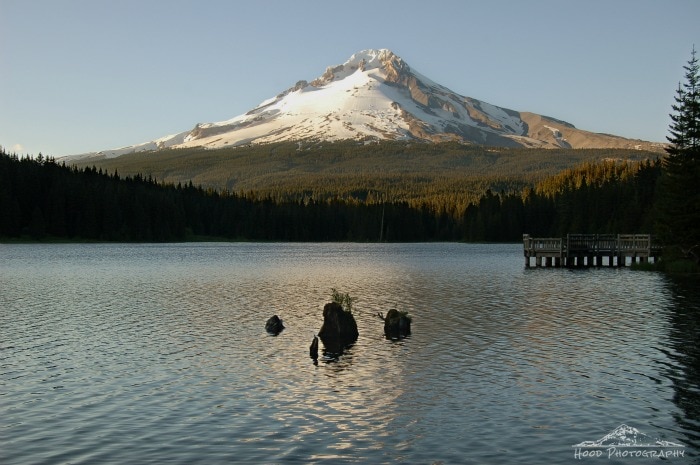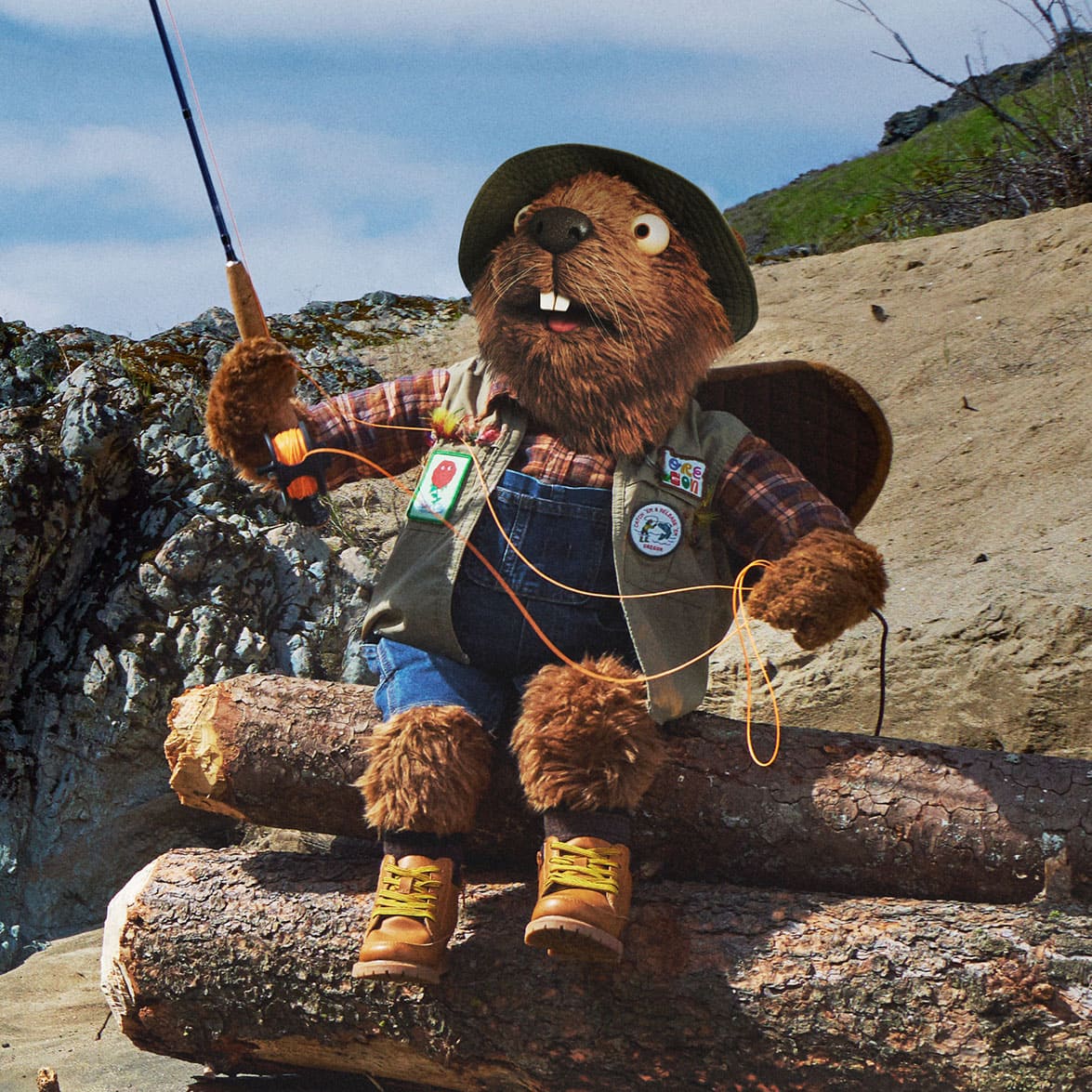
Four years ago in June, I nervously walked the path along the west side of Trillium Lake to the spot where my fiancé and our families waited. We got married at the beautiful location that day, and now we visit every chance we get. All winter, I long to be able to return to my favorite place. In the late spring, the snow melts and the road re-opens. Recently, this happened earlier than it has in quite a few years, just before Memorial Day.
The path is an easy two-mile walk that circumvents the lake. The day use area is a good starting point. Here there are multiple picnic areas with tables and barbecues for day-trippers. One of the most common attractions of Trillium Lake is also within the day use area: the picturesque rustic log dock that pokes out into the water. Fisherman and photographers often share this popular spot. It’s a treat to get to enjoy it alone for a few minutes and take in the sights. From here, the trail continues north between the lake and the campground until you reach a large stone-seated amphitheater. In front of you, an old dead tree jets out of the water, much taller than its living counterparts. Often a bird of prey is propped on the very tip, surveying its surroundings. Strolling on, you now reach the forested portion of path, dotted with meadows and swamplands. Wooden footbridges provide an easy crossing through these areas. The trail goes on another mile or so until you reach the dam, the recently renovated fisherman’s paradise located at the south end of Trillium Lake. The views from the dam cannot be beat. Mt. Hood looms ahead of you and when there is no wind, the water becomes a perfect mirror. Kids play in the water, families cook hot dogs over the rocky fire pits, and tourists gasp in awe as they click the shutter buttons on their cameras.
Wildlife is abundant in the area. One of my favorite occurrences is when you can see the river otter playing in the water, diving over and over to come up with large fish. Overhead, bald eagles, hawks and osprey soar and eventually dive, showing the human fishermen how it is done. Blue heron swoop in and take perch on logs or boats resting along the banks. If you are lucky, a deer can be spotted as you walk the quiet trails. Many smaller critters can be seen as well, such as squirrels and chipmunks. Be sure to keep your picnic items packed away, because they are smart and will take any advantage they can get to grab the bread goodies (that is, if the stellar jays do not beat them to it!). Mama ducks with their babies in tow swim along the edges, hoping for a kind visitor to toss them a snack. Salamanders are abundant throughout the lake waters, much to the dismay of the fisherman who are using worms; a salamander will easily snack off that bait! Frogs can also be spotted in the swampy areas along the northern end.
Throughout the spring and summer, wildflowers are in constant rotation, carpeting the forest and its surrounding swamps and fields. Trilliums bloom in early spring once the snow has melted. There are several varieties that can be found along the lake’s edges and extending further into the forest. Even the road that leads there is heavily lined with the lake’s three-leafed, three-petaled namesake. The marsh marigold joins the yellow flowers of the skunk cabbage, their waxy leaves shining in the sunlight. Rhododendron bloom later in the season than lower elevations and usually are at their peak in early July. About the same time, water lilies take over the north side of the lake, and their beautiful yellow flowers rise out of the water and bloom. Throughout summer, bear grass, everlasting, wild carrot, buttercup, daisies and hardhack take over the wildflower fields on the western side, creating a thick jungle that buzzes with the work of bees.
For those interested in staying the night, the campground is perfect for tents or RVs. Rustic sites with only a picnic table and fire pit make it feel like you are in a more secluded area than you truly are. The campground itself is actually quite small (only 57 total sites), and a few of these are right along the water. Kids freely ride their bikes along the paved roads. The smell of campfire and the grilling of trout fill the air. At dusk, the frogs from the swamp can be heard. As the sun dips behind the surrounding hills, the snow on Mt Hood glows pink in the sunset. Best of all, if you wake up early, a misty fog often covers the glassy waters and catches in the trees around you — and the quiet peacefulness cannot be beat!
